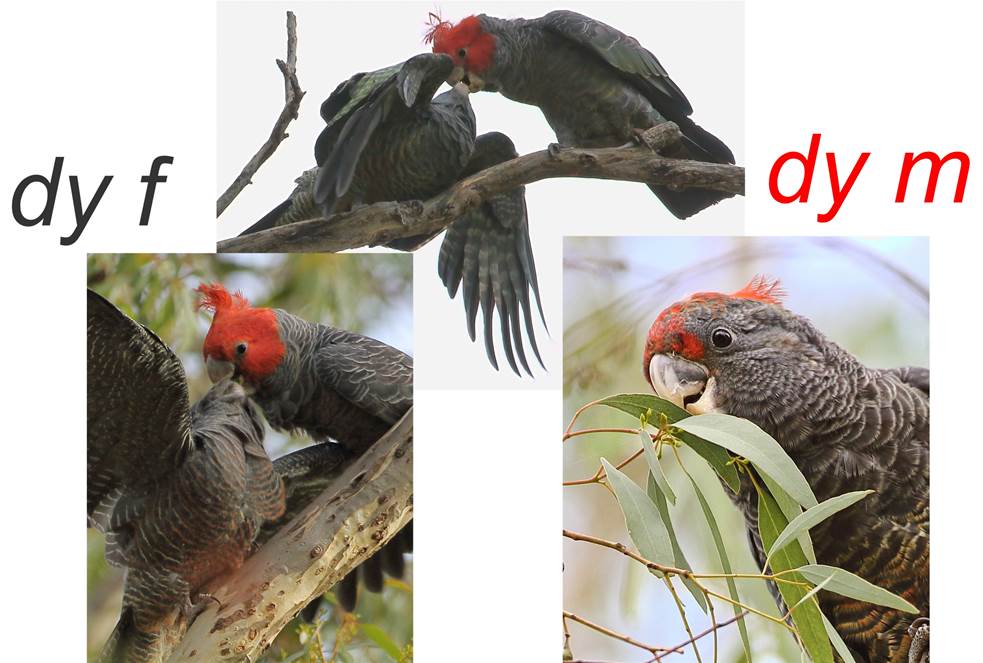There are some dependant young about, detectable by begging calls, rather like those of galahs. Such reports are by far the most common breeding records in the ACT. Without wishing to reignite the breeding code discussion, I’ll add the obvious that the nesting might have been far from Canberra’s suburbs. Below snapped in the tree-tops in this morning’s low light conditions. The dy f and dy m were apparent siblings (family party of 4). On right the same dy m explores the foliage of a yellow box.

From: Chris Davey [
Sent: Saturday, 14 February 2015 10:04 AM
To: 'calyptorhynchus .'; 'Canberra Birds'
Subject: RE: [canberrabirds] Gang-Gang influx
Thanks John. I wondered if this would happen and so important for as many observers as possible to contribute to the GG Muster starting 19th February.
Chris
From: calyptorhynchus .
Sent: Saturday, 14 February 2015 9:50 AM
To: Canberra Birds
Subject: [canberrabirds] Gang-Gang influx
As Geoffrey pointed out there does seem to be a bit of GG influx at the moment. I recorded GGs 16 times in February 2014 at my house in Hughes, and this February, half way through the month, I have recorded them 22 times (and I am not spending more time at home, unfortunately).

